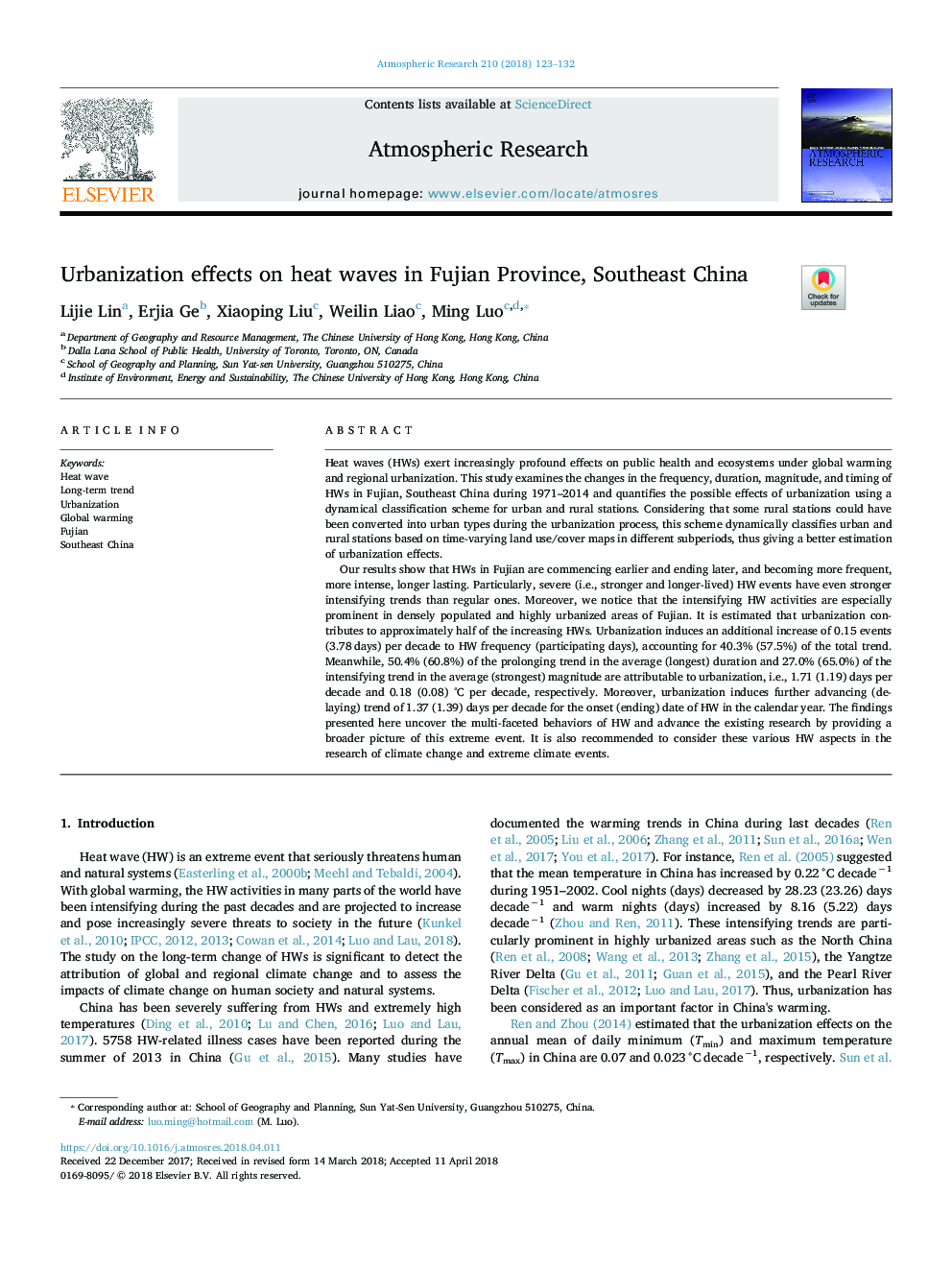| Article ID | Journal | Published Year | Pages | File Type |
|---|---|---|---|---|
| 8864584 | Atmospheric Research | 2018 | 10 Pages |
Abstract
Our results show that HWs in Fujian are commencing earlier and ending later, and becoming more frequent, more intense, longer lasting. Particularly, severe (i.e., stronger and longer-lived) HW events have even stronger intensifying trends than regular ones. Moreover, we notice that the intensifying HW activities are especially prominent in densely populated and highly urbanized areas of Fujian. It is estimated that urbanization contributes to approximately half of the increasing HWs. Urbanization induces an additional increase of 0.15 events (3.78â¯days) per decade to HW frequency (participating days), accounting for 40.3% (57.5%) of the total trend. Meanwhile, 50.4% (60.8%) of the prolonging trend in the average (longest) duration and 27.0% (65.0%) of the intensifying trend in the average (strongest) magnitude are attributable to urbanization, i.e., 1.71 (1.19) days per decade and 0.18 (0.08) °C per decade, respectively. Moreover, urbanization induces further advancing (delaying) trend of 1.37 (1.39) days per decade for the onset (ending) date of HW in the calendar year. The findings presented here uncover the multi-faceted behaviors of HW and advance the existing research by providing a broader picture of this extreme event. It is also recommended to consider these various HW aspects in the research of climate change and extreme climate events.
Related Topics
Physical Sciences and Engineering
Earth and Planetary Sciences
Atmospheric Science
Authors
Lijie Lin, Erjia Ge, Xiaoping Liu, Weilin Liao, Ming Luo,
